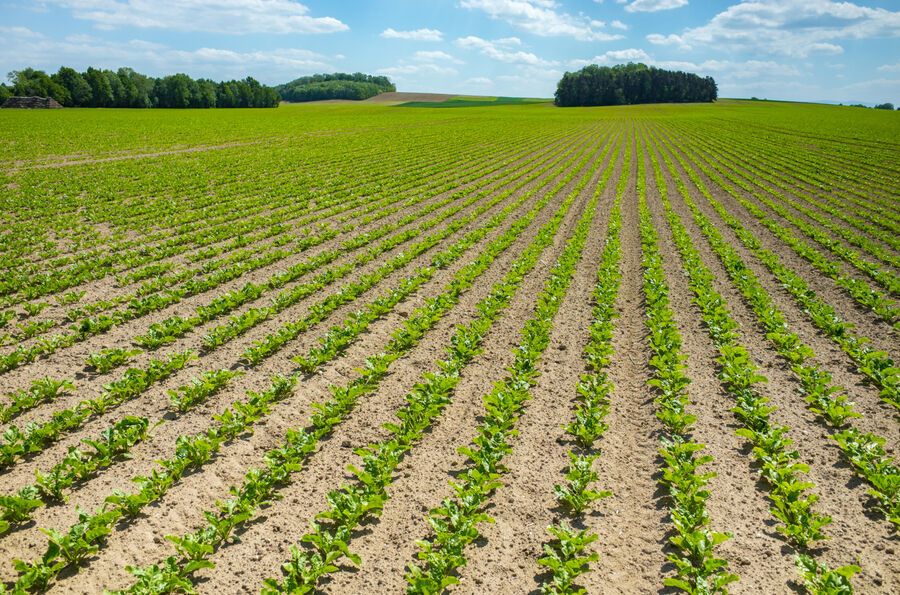
Fodder beet has earned its place in New Zealand farming systems as a high-energy, high-yield winter feed. But it’s also one of the most unforgiving crops to establish. Get the setup wrong, and you’re chasing it all season. Get it right, and you’ll put tonnes of reliable feed in the paddock.
With winter crops, there are no second chances - so the key is precision at sowing. Here’s what matters most.
1. Soil Temperature and Timing
Fodder beet needs warmth to germinate evenly. Cool soils equal slow, patchy emergence, which means gaps, weeds, and lost yield.
- Target soil temps of 10°C and rising at sowing depth.
- Avoid the temptation to go in too early - it costs more in weed sprays and re-sows.
- Later sowings can still perform, but remember: yield potential drops approximately ~5% for every week delayed past November in most regions.
Patience at planting often pays in even, vigorous crops.
2. Seed Placement and Depth
Fodder beet is unforgiving on placement. A few millimetres too deep or shallow, and emergence drops fast.
- Target depth: 1.5–2.5 cm.
- Sow into a fine, firm, moist seedbed - the “trifecta” for beet.
Consistency is king here. Uneven placement = uneven bulbs = headaches at grazing.
3. Seedbed Quality
Beet seed is small, with limited reserves. If it doesn’t get good soil contact and moisture, it won’t push through.
- Cloddy soils = poor contact and patchy strike.
- Loose soils = moisture loss and shallow rooting.
- Poor consolidation = uneven germination.
- Fine firm seedbed = better weed control.
The rule of thumb: if you can walk across the paddock without sinking, you’re close to ready. Don’t start the drill until consolidation is right.
4. Weed Control: Don’t Give Weeds a Head Start
Fodder beet seedlings are slow out of the ground. That gives weeds an open runway if you’re not on the front foot.
- Pre-emerge sprays are non-negotiable - protect that vulnerable window before canopy closure.
- Post-emerge sprays need to be well-timed - young beet is sensitive, but weeds must be taken out early.
The golden rule: keep beet clean for the first 8–10 weeks. After canopy closes, the crop does the heavy lifting.
5. Nutrition: Getting N and Trace Elements Right
Fodder beet is a heavy feeder, but it’s also sensitive to imbalances.
- Base fertility: Target pH 6–6.2. Apply lime if needed well before sowing.
- Nitrogen: Apply N at sowing (30–50 kg/ha). A further 50-75 kg/ha during peak growth time to get the crop to canopy closure as quick as possible. A full canopy = maximum light interception resulting in less weeds.
- Phosphorus & Potassium: Both are critical. Use rates will depend on your soil type and fertility.
- Trace elements: Boron and sodium often limit beet performance. Test soils and correct before sowing.
Balanced nutrition builds both yield and crop safety at grazing.
6. Establishment Costs vs. Returns
Fodder beet isn’t a cheap crop to grow. Between seed, sprays, and fertiliser, establishment can sit around $2,500–$3,000/ha. But with yields of 20–30 t DM/ha at metabolisable energy (ME) ~12, the economics are hard to beat when done right.
Cost per kg DM often lands at 8–12 cents/kg DM, making it one of the lowest-cost feeds on farm. The key is not wasting spend through poor setup.
7. Grazing Management: Plan Ahead
It’s not just about growing the crop - it’s about using it safely and efficiently.
- Transition stock slowly (10–14 days minimum) to avoid acidosis.
- Always provide fibre alongside beet (hay, silage, or grass).
- Provide access to water at all times.
- Avoid grazing on very wet soils to prevent pugging and bulb loss.
Planning paddock access, breaks, and feed allocation months in advance makes grazing smoother and safer.
Key Takeaways
- Sow when soils hit 10°C and rising for even establishment.
- Seed placement at 1.5–2.5 cm is critical - consistency drives uniform bulbs.
- Fine, firm, moist seedbeds set crops up for strong emergence.
- Keep beet weed-free for 8–10 weeks - pre- and post-em sprays are essential.
- Balance nutrition: Generous N, appropriate P & K, correct trace elements.
- Expect establishment costs of $2,500–$3,000/ha, but low c/kg DM when done right.
- Grazing requires careful transition and planning for animal health.
Thinking about beet for winter? Talk to your local Catalyst agronomist about paddock selection, sowing windows, and crop planning. Getting it right at the start makes all the difference at harvest.